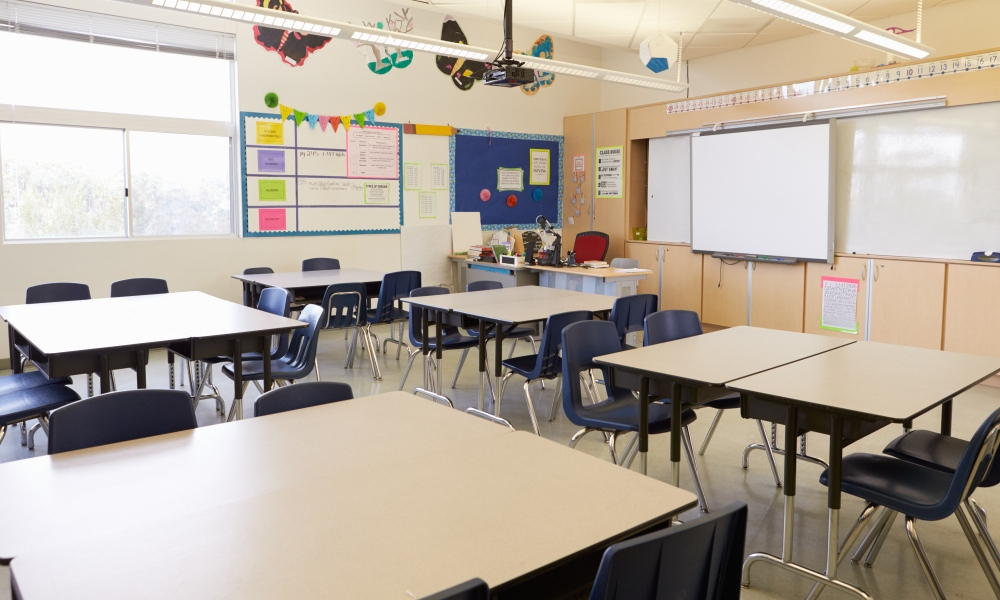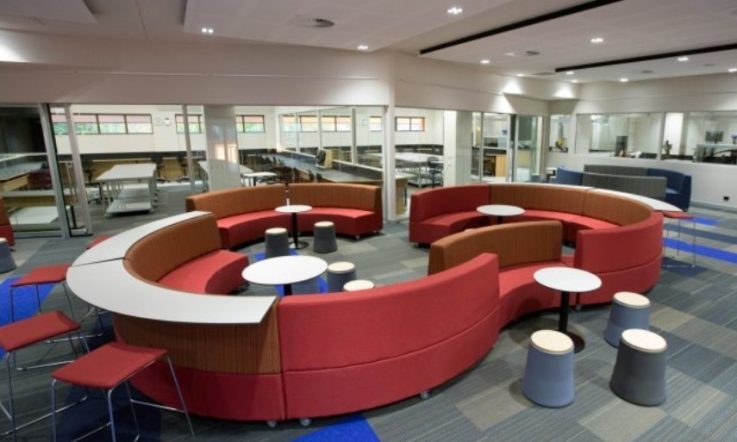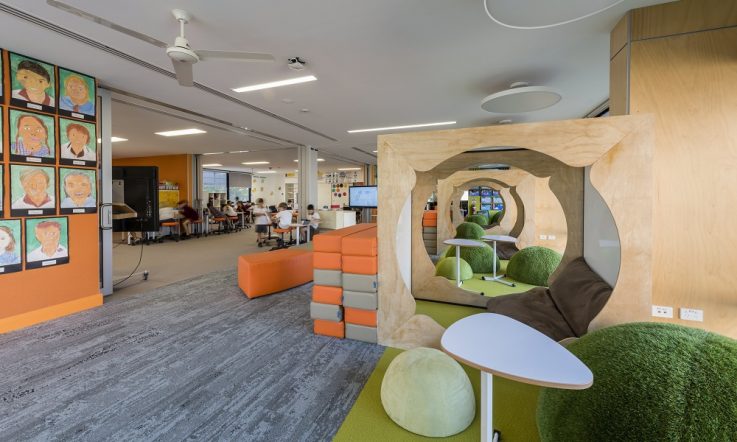How can educators make effective use of teaching spaces to help students engage in deeper learning? That's the focus of a major research study involving thousands of schools.
The Innovative Learning Environments and Teacher Change (ILETC) project is a four-year study that began in 2016. Lead Chief Investigator Wes Imms shared some of the early findings on the opening day of Research Conference 2019.
The annual Research Conference is hosted by the Australian Council for Educational Research (ACER). This year's theme is Preparing students for life in the 21st Century: Identifying, developing and assessing what matters.
Innovative Learning Environments (ILEs), which combine flexible use of spaces, furniture and technology with greater collaboration and flexibility in relation to teaching and the curriculum, are becoming more common. Imms told delegates ILETC data suggest 25 per cent of all Australian and New Zealand classrooms are ILEs, as opposed to traditional classrooms. However, few teachers see traditional spaces as optimum.
Imms is Associate Professor of Education at the Melbourne Graduate School of Education and Director of the University of Melbourne's Learning Environments Applied Research Network. He says there's an assumption that ILEs are superior to traditional classrooms in helping students develop collaborative, communicative, creative and critical skills, yet there's been little research on this.
The academic adds the qualities embedded in what's often called 21st Century learning have been addressed in different ways historically, for hundreds of years, within education. ‘The first note of caution is actually we are just part of a long, ongoing iteration of improving educational practice – and that's from a pedagogical point of view, in terms of how we teach in these spaces, it's from how we design the spaces, but, predominantly, it's all about how kids learn,' Imms tells Teacher.
‘Our study is about, how do we help teachers understand that these spaces can actually be utilised to help students learn in ways that we think that they should be learning … which, coincidentally, is deep learning (which is the 21st Century learning skills really).
‘I suppose my main point is, we have always had this as a focus. I mean, look at particular subject areas and they've always taught with this sort of concept in mind. So, an example would be Visual Arts education – it's always been about engaging kids in learning, doing it through personal experience, doing it through relevancy to their own world situation, across a series of approaches in multiple environments.
‘So, it's not brand new, but we are becoming better and better, I think, at refining it. And part of our job in our research is to bring in space (the physical environment) and actually help teachers become aware that this is another method for them to help kids to learn in that way.'
The ILETC project brings together 17 industry, manufacturing, policy and school partners, including the education systems in Australia and New Zealand, and several research-focused schools involved in the testing and validation of tools and strategies. The first phase of the project was a survey of teachers to capture what was happening in schools.
‘We started the project with some assumptions, which were pretty well rife back then – and you still hear them now,' Imms says. One of these assumptions was that teachers as using ILEs in the same way they've always taught. ‘We have learned over time that that's not necessarily true. We did a large survey in the first year of the project, which we're still using in terms of the data, that actually showed a very strong correlation between student deep learning and these more innovative spaces.
‘The data also suggest that if you want superficial learning, in other words standardised testing-type results, then more traditional settings tend to foster that. What that really highlights to us is this notion of ILEs isn't open plan, and isn't in opposition to traditional classrooms. The reality is that flexible learning spaces, innovative learning environments, are very much a whole suite of spaces that teachers can use to teach in the way that they need to teach at that particular time.
‘The way that the design is going, the way schools are being built and used, has to really reflect the fact that there are certain times you do need to sit kids down and teach to them in a very didactic, very explicit learning approach, and there are also other times you have to allow them to work by themselves, or work in small groups, or work in collaboration with large groups of kids. And I think some of the conversations have tended to polarise the discussion, saying it's either open plan spaces and open programs, or its traditional and didactic. Actually, it's a combination – that's what an innovative learning space is.'
Imms says one of the surprising things to come out of the survey was teachers didn't need researchers to build resources so they could use the space better for pedagogical purposes. ‘What we've learned is, a lot of teachers either knowingly or unknowingly are putting into practice strategies and tools to use spaces better, in terms of good quality teaching. So, our project has changed focus a little bit in that now we're actually trying to capture those strategies and tools. That's the phase that we're in at the moment (phase 2), and that will finish at the end of this year.'
Imms says when it comes to effective use of spaces, given we're only talking about some teachers in some schools, the next challenge is how can researchers disseminate this knowledge and information and scale up good practice to a great population? With this in mind, the ILETC project aims to support teachers in making the transition from traditional classrooms to ILEs through the creation of a Transitions Pathway that maps tools and strategies against 14 characteristics of using spaces well to effect good learning.
‘Examples would be things like, there needs to be participation in the design process between the school and the architects – when that happens you get a greater instance of teachers using spaces better over time. Teachers need time to actually be able to prototype and develop strategies and tools relevant to the types of spaces they're going to move into. There needs to be good evaluation methods put into place, so teachers can see what is working and what isn't working. There's a whole suite of those that summarise down those characteristics, those strategies and tools.'
The project team is currently in the process of cataloguing school examples to plot them into the pathway. Imms says the second thing that's being built with research partners is the concept of ILETC typologies. ‘There are five of them. What they do is, they summarise down those critical bits of knowledge that teachers need to be able to understand that complex phenomena of the built environment that you teach within.'
The five typologies are: spatial design; pedagogies; acoustics; furniture; and, technology. ‘For instance, the typology of design – so, teachers get an understanding of what the range of spaces available to them are; furniture – what sort of furniture exists and how can it be used to effect certain types of learning under certain circumstances; acoustics - what affects acoustics in these type of spaces and how can teachers manipulate acoustics to improve the quality of education that happens; technology is a critical one – how do we utilise technology within a more innovative space in order to have better learning for children …'
Imms says it's an exciting place to be and the project continues to explore new boundaries. A key takeaway is that there's no one formula or recipe for success. ‘Quite the opposite, there's an enormous amount of information out there and what we have to do critically is organise it so that teachers can access it at the place and time that they need it.
‘I think if there's lot of information out there, the reality is teachers' heads, when it comes to learning space, is a bit like a potpourri of stuff just boiling around – they know of acoustics, they know of furniture, they know of technology … they don't quite know how they link or what they should be doing. But when you bring the five typologies in it helps give teachers some structure … and a way to logically follow through their particular needs.'
The academic told the conference it's how we use the space that makes it an innovative learning environment, but ended his presentation with a note of caution - we shouldn't expect too much. 'ILEs are not a revolution, just another step.'
Teachers can keep in touch with the ILETC project and access publications, blogs, and support materials at the project website.
In your lesson planning, do you consider the physical space you’ll be teaching in, flexible elements such as furniture and technology, and any particular requirements?



